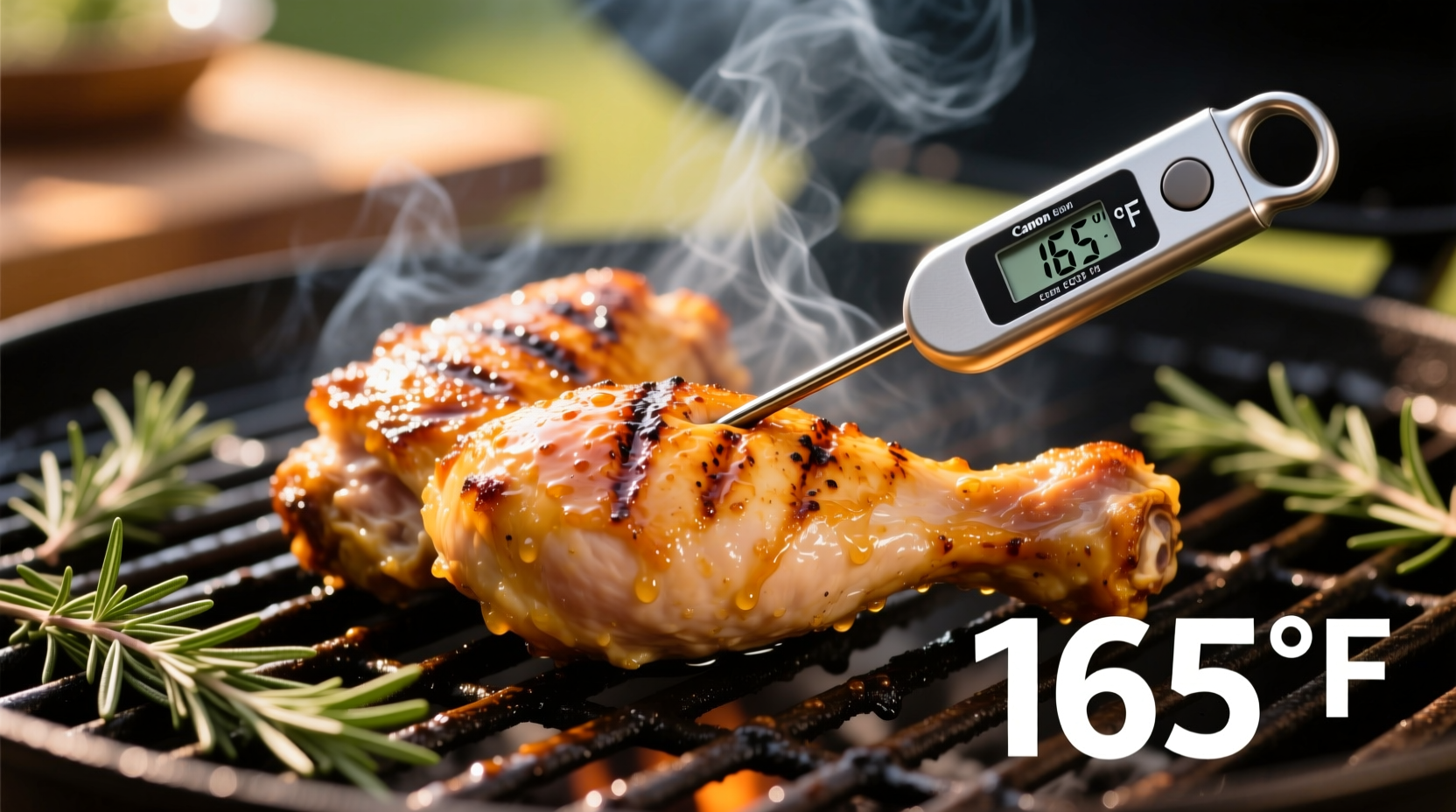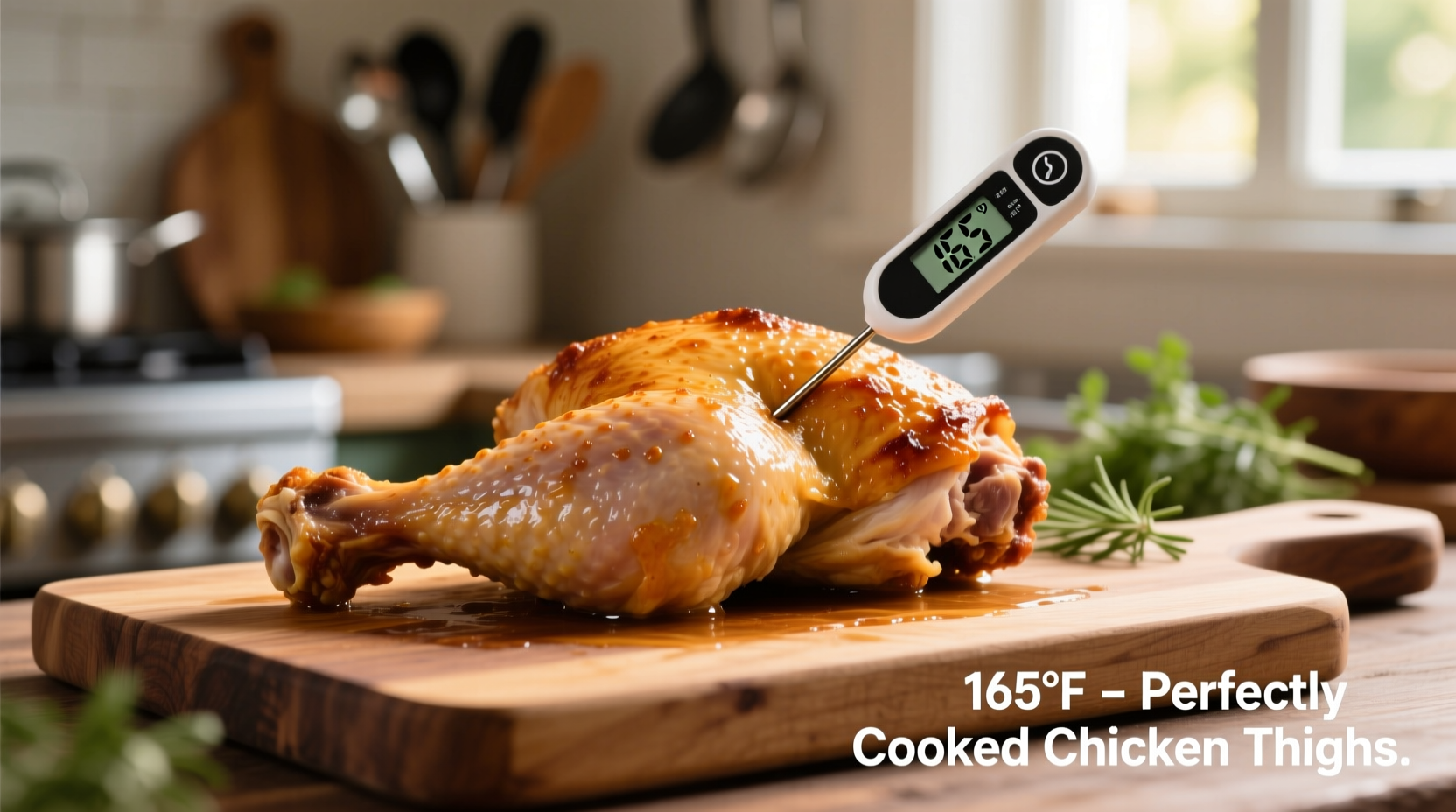Ever pulled chicken thighs off the grill only to find them dry as cardboard or worry they're undercooked? You're not alone. Getting chicken thighs perfectly cooked—tender, juicy, and safe—hinges on understanding precise temperature control. This guide delivers exactly what you need: science-backed temperature targets for every cooking method, practical thermometer techniques, and visual cues that guarantee restaurant-quality results every time.
The Science Behind Chicken Thigh Temperature
Chicken thighs contain more fat and connective tissue than breasts, which affects how they cook. Unlike chicken breasts that dry out quickly past 165°F, thighs benefit from slightly higher temperatures that render fat and break down collagen for that perfect fall-off-the-bone texture.
Understanding the temperature timeline is crucial for perfect results. As chicken thighs cook, specific changes occur at different temperature thresholds:
| Temperature | Physical Change | Resulting Texture |
|---|---|---|
| 140-150°F (60-66°C) | Collagen begins breaking down | Firm but slightly rubbery |
| 150-160°F (66-71°C) | Fat renders, collagen dissolves | Tender with slight resistance |
| 160-165°F (71-74°C) | Final safety threshold reached | Perfectly juicy, fully safe |
| 165-175°F (74-79°C) | Excessive moisture loss | Dry, stringy texture |
This temperature progression explains why pulling thighs at 160°F yields juicier results than waiting until they hit 165°F. The USDA Food Safety and Inspection Service confirms that 165°F is the minimum safe temperature for poultry, but carryover cooking during the 5-10 minute resting period will bring them to the final safe temperature while preserving moisture.
Temperature Targets by Cooking Method
While the final safe temperature remains consistent, your pull temperature varies based on cooking method due to different heat transfer rates and carryover cooking potential.
| Cooking Method | Pull Temperature | Resting Time | Special Considerations |
|---|---|---|---|
| Oven Roasting | 158-160°F (70-71°C) | 8-10 minutes | Higher oven temps require earlier pull |
| Grilling | 155-158°F (68-70°C) | 5-7 minutes | Direct heat requires lower pull temp |
| Pan-Searing | 157-159°F (69-70°C) | 5 minutes | Skin-side down longer for crispiness |
| Slow Cooking | N/A | None | Hold at 165°F+ for 30+ minutes |
| Air Frying | 156-158°F (69-70°C) | 5 minutes | High heat circulation increases carryover |
According to research from the American Meat Science Association, bone-in thighs require approximately 25% longer cooking time than boneless to reach the same internal temperature. The bone acts as a heat sink, slowing the temperature rise in the meat closest to it. Always check temperature in multiple spots, especially near the bone.
Proper Temperature Measurement Techniques
Even with the right target temperature, inaccurate readings can ruin your meal. Follow these professional techniques for reliable results:
- Insert correctly: Place the thermometer probe into the thickest part of the meat, avoiding bone, fat, or gristle
- Check multiple spots: Especially with bone-in thighs, check near the bone and in the meatiest section
- Wait for stabilization: Leave the thermometer in for 10-15 seconds until the reading stops changing
- Calibrate regularly: Test your thermometer in ice water (32°F/0°C) or boiling water (212°F/100°C)
Context matters when interpreting thermometer readings. When cooking on a grill with significant temperature fluctuations, a reading might temporarily drop when moving thighs between direct and indirect heat zones. The National Center for Home Food Preservation notes that thermometer accuracy can be affected by extreme ambient temperatures, so avoid checking immediately after moving from a hot grill to a cold environment.

Visual and Textural Doneness Indicators
While a thermometer is essential for food safety, professional chefs use additional sensory cues to verify doneness:
- Juice color: Clear or faintly yellow juices (never pink or red)
- Meat texture: Firm but yielding to gentle pressure, not rubbery
- Leg movement: Thigh bone wiggles slightly when lifted
- Shrinkage: About 25% reduction from raw size
Remember that color alone isn't a reliable indicator. The USDA explains that fully cooked poultry can sometimes appear pink due to myoglobin reacting with oven gases, especially in younger birds. Always verify with a thermometer.
Troubleshooting Common Temperature Issues
Dry chicken despite correct temperature: You're likely not resting the meat properly. Resting allows juices to redistribute. Cover loosely with foil and wait at least 5 minutes before cutting.
Skin not crispy: Start skin-side down at higher heat (400°F+), then reduce temperature. Pat thighs dry before cooking and avoid flipping too frequently.
Uneven cooking: Arrange thighs with thicker parts toward the heat source. For oven cooking, rotate the pan halfway through cooking time.
Undercooked center: This often happens when searing at too high heat, creating a false crust while the interior remains raw. Start with medium-high heat and finish at lower temperature.
Advanced Temperature Techniques
For truly exceptional results, consider these professional approaches:
- Dry brine: Salt thighs 12-24 hours before cooking to improve moisture retention
- Reverse sear: Cook slowly at low temperature (275°F) until 150°F, then sear at high heat
- Temperature ramping: Start at 325°F, increase to 425°F for the final 10 minutes
These techniques provide greater control over the cooking process, ensuring even temperature distribution and optimal texture development throughout the thigh.











 浙公网安备
33010002000092号
浙公网安备
33010002000092号 浙B2-20120091-4
浙B2-20120091-4